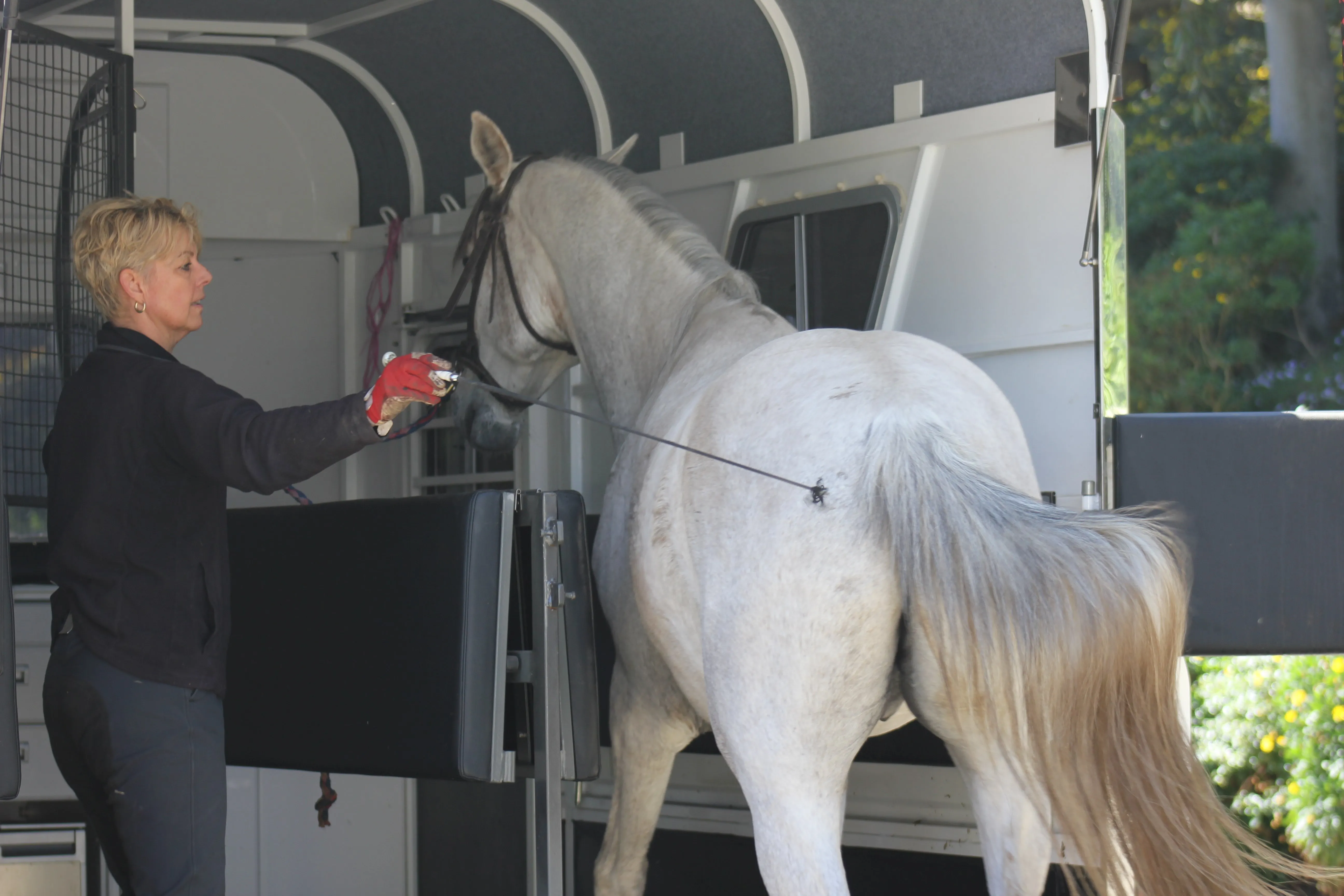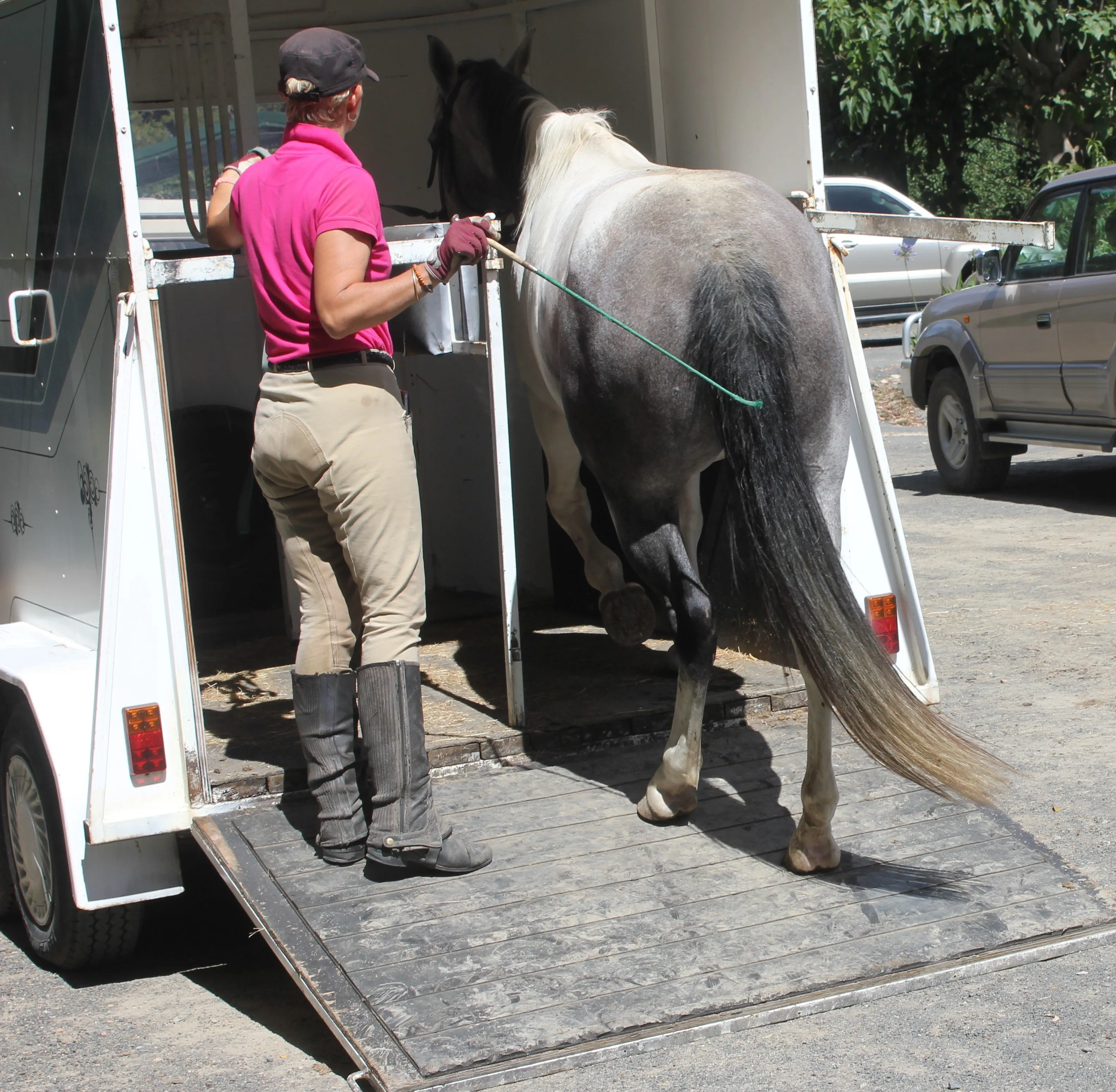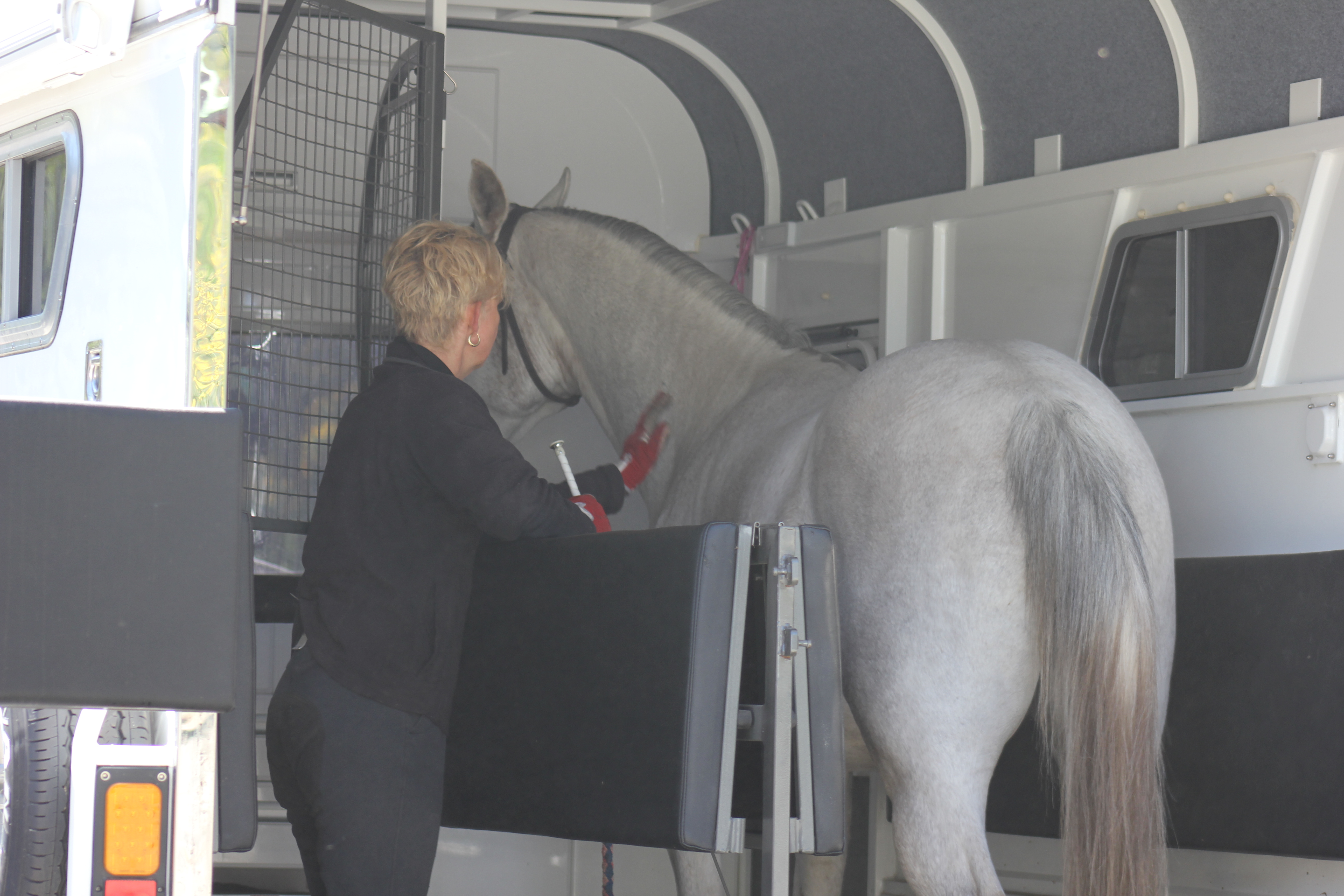The Art of Float Training: Building Confidence Not Just Compliance
Float training is often seen as something you only deal with when you “have to” — before a vet visit, a sale or a move. But in our experience, float training isn’t just about transport. It’s about trust, timing, and long-term safety. It’s about teaching the horse to step “with” you, not simply to get “on” the float. And most importantly, it’s about never rushing the process.
One key principle to remember is: “leave enough time”. Too often, horses are introduced to floats when there’s already a deadline ticking. That urgency creates stress for both horse and handler, and that stress sets up the kind of fight-or-flight reaction that sticks — turning what should be a calm process into a traumatic one.
Instead, focus on building confidence gradually. By breaking the process into clear, controlled steps, develop float loading into a “movement of understanding”, rather than fear or confusion.
Timing Is Everything
If there’s one thing we’ve learned, it’s that “float training should never be rushed”. Horses are incredibly perceptive animals, and they quickly learn whether the human working with them is calm and thoughtful — or stressed and reactive. Float loading asks the horse to walk into a small, dark space, often alone. That’s a big deal. If we want them to do it willingly and without hesitation, we have to give them the emotional space to learn it properly.
Start float training well before there’s ever a need to go somewhere. Whether it’s a weanling or a horse further along in their education, ensure that float work is part of their foundational training, not an emergency event.
This means you can:
* Work in a relaxed, low-pressure environment
* Take small, incremental steps without pushing
* Revisit and reinforce good experiences
* Avoid creating negative associations with the float
Teaching Forward Energy — Not Just Steps
One of the biggest misunderstandings in float training is the obsession with getting the horse “on” the float, rather than getting the horse to follow a “feeling”. Never ask for “loading” in the traditional sense. Instead, always ask the horse to “advance on the feeling of forward energy” — not just to walk, but to “mentally” commit to moving forward.
This doesn’t mean dragging them forward or pushing them from behind. It means working with subtle energy and intention, so that the horse is learning to say “yes” to forward — whether that’s one step, or twenty. That mental commitment is what leads to long-term confidence.
Steps Forward, Steps Back — But Only on Our Terms
Another core element of float work is “maintaining the leadership role”. That doesn’t mean dominance — it means clarity. As the handler, we decide:
* How many steps forward the horse takes
* How many steps back
* When to pause
* When to release
Why is this so important? Because “horses learn through patterns”. If they realise that “they” can decide when to back off the ramp, or spin away from pressure, that becomes the habit. And that habit quickly turns into resistance, which creates safety issues.
By always directing movement — both forward and backward — we keep the communication clear. It also helps prevent panic. Horses feel safer when “we’re” in control. If they don’t trust us to manage the situation, they try to take over — and that’s where things go wrong.
Never asking for “all the way in” unless the horse is ready. Sometimes it’s three steps forward, two steps back. Sometimes it’s just standing at the ramp, looking and breathing. Every moment counts. Every moment teaches something.
---

Safety Is in the Control — Not in the Speed
One of the biggest float myths is that a fast load is a good load. But we believe the opposite. Safety comes from control, not speed. We want a horse to load “because they understand the ask” — not because they’re being driven forward in fear or escaping pressure from behind.
Quick fixes don’t last. They often lead to float rushing, on or off, slamming into chest bars or difficulty in unloading. We’ve seen horses go up, fall back or panic mid-load because they were pushed too far, too soon.
The goal is always to preserve the “horse’s calmness” and “mental presence”. We never want to “surprise” the horse by suddenly shutting the door or trick them into going on. Everything is slow, clear, and predictable. That’s what builds confidence — and keeps everyone safe.
Progress Over Perfection — Small Sessions Matter
Each float session should be a building block. It’s not about getting it perfect every time. It’s about “progressively improving” the horse’s education and emotional confidence.
There is no need don’t drill them. Don’t aim to have them fully loading in a day. Do many short sessions — just 20 - 30 minutes — focus on building a good feeling around the float. Mostly ask for one - two feet on the ramp and then back again. Then three - four feet and back again. The key is to end in a try, no matter how small.
The consistency of these calm, structured sessions leads to lasting confidence. And once that’s in place, the horse’s entire outlook on transport — and pressure in general — starts to shift.
The Right Environment Matters
You can’t build confidence in chaos. For float training to be effective, the environment must be “safe, calm and predictable”. That means choosing a quiet area with:
* No loose horses
* No tractors or feed trucks coming and going
* No dogs, bikes, or sudden distractions
Do everything you can to set the horse up for success — and that starts with eliminating unnecessary variables. A stressed, distracted horse is not in a learning state. They can’t process information if they’re in flight mode.
The Float Itself — It Makes a Difference
Not all floats are created equal. A poor-quality or unsafe float can undo all the good work in an instant. That’s why you should always use well-maintained, horse-friendly floats — ideally with “breaching doors”, solid ramps, non-slip flooring and good ventilation.
A float that rattles, echoes or feels unstable will only add stress. Horses are sensitive to how things sound, feel underfoot and move beneath them. If you want them to trust the float, it needs to “deserve” that trust.

Final Thoughts
Float training should never be a “job to tick off the list.” It’s a meaningful part of a horse’s education — one that directly impacts their safety, confidence, and long-term soundness. When done well, it creates a horse who loads without stress, stands quietly, and travels without tension. That kind of foundation benefits everything that follows — from vet visits to race days to spelling trips.
By giving horses the time, clarity, and individual support they need, we’re not just getting them on the float — we’re teaching them how to stay relaxed, responsive, and confident in a wide range of situations.
And that’s a skill that lasts far beyond the ramp.

